From the Trenches
Built upon Bones
By JARRETT A. LOBELL
Monday, December 07, 2015
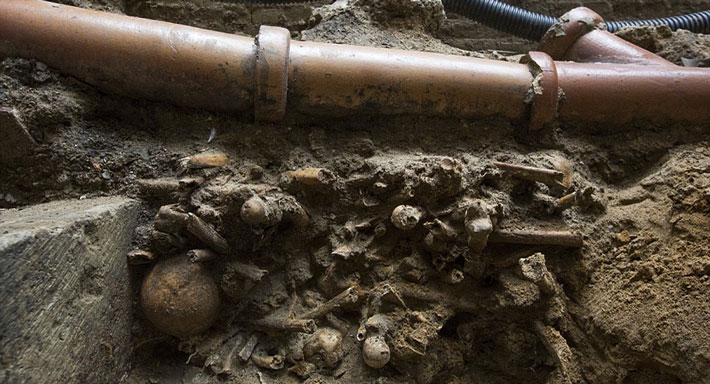
When King Henry III’s (A.D. 1216–1272) workers began the monumental foundations for a Gothic-style Westminster Abbey, they encountered burials dating to early periods in the abbey’s history. They stockpiled the remains and reburied them in charnel deposits in an area that was likely a monastic burial ground. Now excavations in preparation for the building of a new Gothic-style tower have rediscovered these bones, as well as 19 other burials in both cist graves and coffins, under a Victorian-era drainpipe. The burials likely date to between A.D. 1000 and 1250, and will provide important evidence of early medieval life at the abbey.
A Baltic Sea Monster Surfaces
By SAMIR S. PATEL
Monday, December 07, 2015
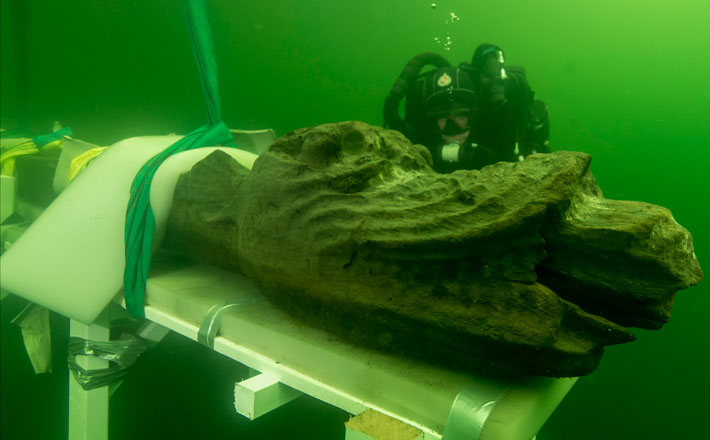 Figureheads, carved decorations on the prows of sailing ships, went out of fashion in the nineteenth century, but judging by the one recently pulled from the Baltic, perhaps it is time for a revival. Maritime archaeologists in Sweden recently raised a figurehead depicting a monster from the fifteenth-century wreck of Gribshunden (“Grip Dog”) off the southern coast. The warship, belonging to Danish King Hans, sank at anchor following a fire in 1495, and is today one of the best preserved ships from the period, because the cold Baltic kept shipworms at bay. Researchers hope to raise more from the ship soon.
Figureheads, carved decorations on the prows of sailing ships, went out of fashion in the nineteenth century, but judging by the one recently pulled from the Baltic, perhaps it is time for a revival. Maritime archaeologists in Sweden recently raised a figurehead depicting a monster from the fifteenth-century wreck of Gribshunden (“Grip Dog”) off the southern coast. The warship, belonging to Danish King Hans, sank at anchor following a fire in 1495, and is today one of the best preserved ships from the period, because the cold Baltic kept shipworms at bay. Researchers hope to raise more from the ship soon.
A Kestrel’s Last Meal
By SAMIR S. PATEL
Monday, December 07, 2015

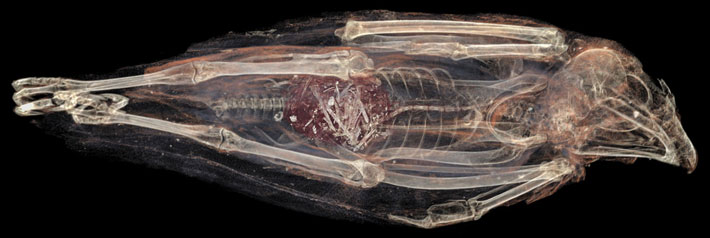
A mummified kestrel’s CT scan shows it choked on its last meal, probably because it had been force-fed. This bird of prey from Egypt, in the collection of Iziko Museums of South Africa in Cape Town, is one of millions of animals mummified as religious offerings, called votive mummies. Kestrels, which are common in Egypt, usually regurgitate the indigestible parts of their meals as pellets. The virtual autopsy of this bird shows that its stomach already contained digested remains from two mice and a sparrow, some of which it would have regurgitated before it consumed yet another mouse. The tail of that last meal got stuck in the gullet and choked the bird. Ancient Egyptians often force-fed their captive animals, which makes this the earliest known evidence of keeping and possibly breeding raptors.
Pompeii Before the Romans
By MARCO MEROLA
Monday, December 07, 2015
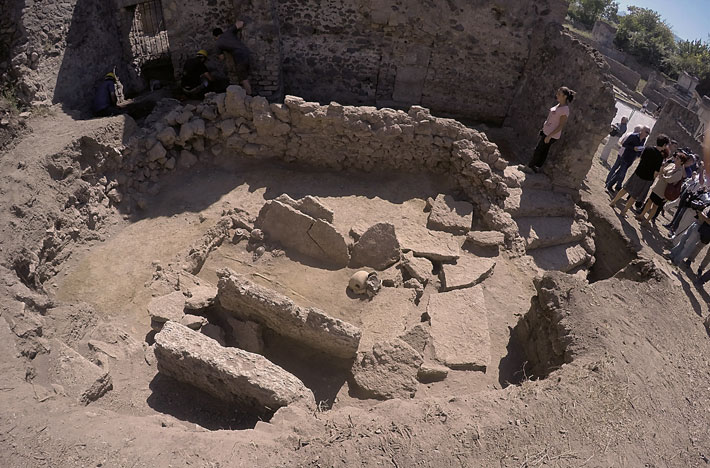 In the fifth century B.C., the Samnites, an Oscan-speaking people from the Appenine Mountains of central Italy, occupied the Campania region, including the town of Pompeii. Being mountaineers and shepherds, the Samnites were eager to control the lowlands, toward the Tyrrhenian Sea, to ensure access to commercial routes across the ancient Mediterranean. They turned Pompeii into a thriving city with a two-mile city wall, ritual sanctuaries, and homes. Yet relatively little is known about their presence in the city, including where they buried their dead.
In the fifth century B.C., the Samnites, an Oscan-speaking people from the Appenine Mountains of central Italy, occupied the Campania region, including the town of Pompeii. Being mountaineers and shepherds, the Samnites were eager to control the lowlands, toward the Tyrrhenian Sea, to ensure access to commercial routes across the ancient Mediterranean. They turned Pompeii into a thriving city with a two-mile city wall, ritual sanctuaries, and homes. Yet relatively little is known about their presence in the city, including where they buried their dead.
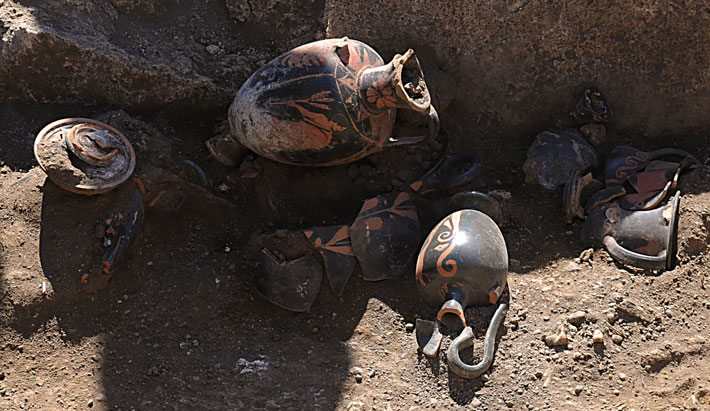 Now archaeologist Laetitia Cavassa from the French National Center for Scientific Research has uncovered an inhumation burial dating to the middle of the fourth century B.C., when Pompeii was still a Samnite stronghold, before it was taken over by the Romans. The tomb, which is believed to be that of a woman between 35 and 40 years old, was filled with high-quality grave goods, including 10 intact vases in a wide variety of shapes and styles. But it is not the artifacts that are the most significant feature of the grave—it’s the date. “It’s an exceptional discovery because it’s the oldest grave ever found in Pompeii,” says Claude Pouzadoux, director of the Jean Bérard Center of Naples, which carried out the excavation along with the Archaeological Superintendency of Pompeii. “We will now be able to understand more concerning the funeral rites of the Samnites, which we still have a great deal to learn about.”
Now archaeologist Laetitia Cavassa from the French National Center for Scientific Research has uncovered an inhumation burial dating to the middle of the fourth century B.C., when Pompeii was still a Samnite stronghold, before it was taken over by the Romans. The tomb, which is believed to be that of a woman between 35 and 40 years old, was filled with high-quality grave goods, including 10 intact vases in a wide variety of shapes and styles. But it is not the artifacts that are the most significant feature of the grave—it’s the date. “It’s an exceptional discovery because it’s the oldest grave ever found in Pompeii,” says Claude Pouzadoux, director of the Jean Bérard Center of Naples, which carried out the excavation along with the Archaeological Superintendency of Pompeii. “We will now be able to understand more concerning the funeral rites of the Samnites, which we still have a great deal to learn about.”
Irish Roots
By ERIC A. POWELL
Monday, December 07, 2015
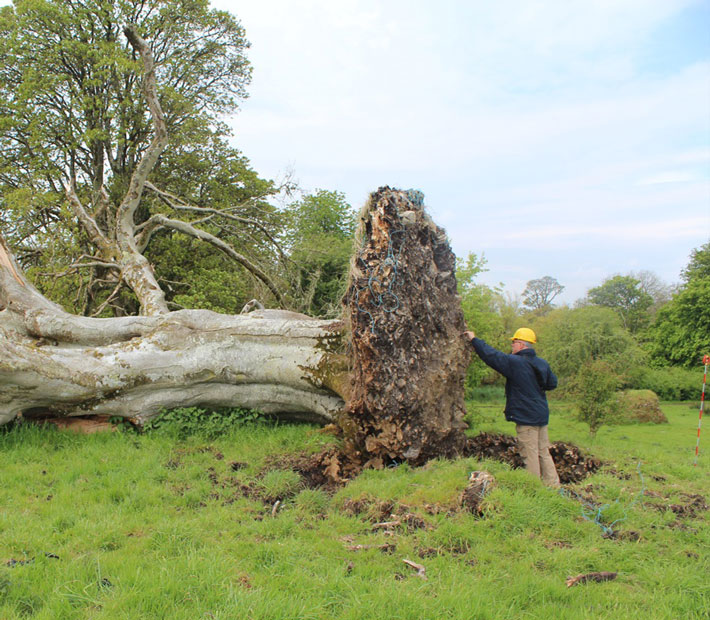
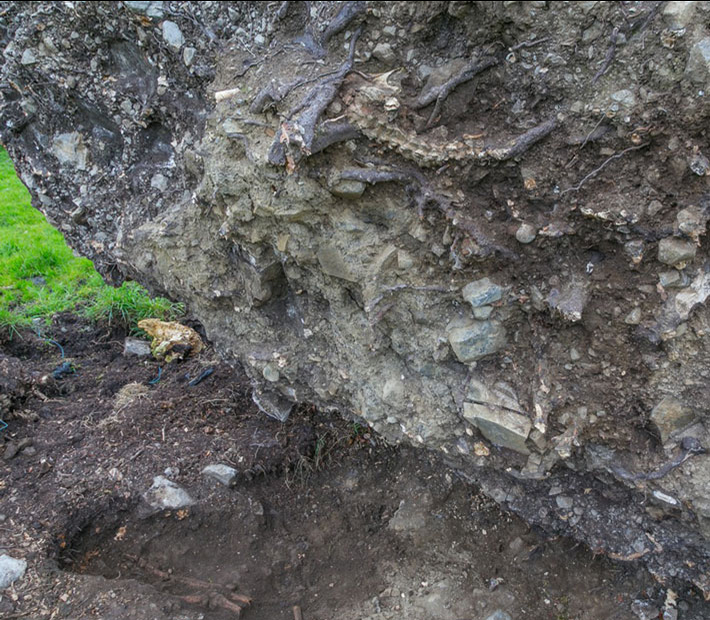 A storm blew over a 215-year-old beech tree in Sligo, Ireland, revealing a skeleton tangled in its root system. Archaeologist Marion Dowd was called in to investigate what she calls “an unusual situation,” and found that the remains belonged to a 17- to 20-year-old man who died of what appear to be knife wounds sometime between A.D. 1030 and 1200. Records indicate that there was a medieval graveyard in the area, and although no visible trace of it survives, Dowd suspects there could be more burials nearby.
A storm blew over a 215-year-old beech tree in Sligo, Ireland, revealing a skeleton tangled in its root system. Archaeologist Marion Dowd was called in to investigate what she calls “an unusual situation,” and found that the remains belonged to a 17- to 20-year-old man who died of what appear to be knife wounds sometime between A.D. 1030 and 1200. Records indicate that there was a medieval graveyard in the area, and although no visible trace of it survives, Dowd suspects there could be more burials nearby.
Advertisement
Advertisement
IN THIS ISSUE
Features
Top 10 Discoveries of 2015
The Many Lives of an English Manor House
Family History
Letter from Hawaii
From the Trenches
Reading the Invisible Ink
Off the Grid
Irish Roots
A Kestrel’s Last Meal
Pompeii Before the Romans
A Baltic Sea Monster Surfaces
Built upon Bones
An Opportunity for Early Humans in China
Hidden Blues
Mr. Jefferson’s Laboratory
Under a Haitian Palace
From Yacht to Trawler to Wreck
Buddha Stands Tall
Denmark’s Bog Dogs
Leftover Mammoth
Finding Parker’s Revenge
Living the Good Afterlife
Artifact
How a Medusa survived Christianity
Advertisement

Recent Issues
-
 May/June 2024
May/June 2024
-
 March/April 2024
March/April 2024
-
 January/February 2024
January/February 2024
-
 November/December 2023
November/December 2023
-
 September/October 2023
September/October 2023
-
 July/August 2023
July/August 2023
-
 May/June 2023
May/June 2023
-
 March/April 2023
March/April 2023
-
 January/February 2023
January/February 2023
-
 November/December 2022
November/December 2022
-
 September/October 2022
September/October 2022
-
 July/August 2022
July/August 2022
-
 May/June 2022
May/June 2022
-
 March/April 2022
March/April 2022
-
 January/February 2022
January/February 2022
-
 November/December 2021
November/December 2021
-
 September/October 2021
September/October 2021
-
 July/August 2021
July/August 2021
-
 May/June 2021
May/June 2021
-
 March/April 2021
March/April 2021
-
 January/February 2021
January/February 2021
-
 November/December 2020
November/December 2020
-
 September/October 2020
September/October 2020
-
 July/August 2020
July/August 2020
-
 May/June 2020
May/June 2020
-
 March/April 2020
March/April 2020
-
 January/February 2020
January/February 2020
-
 November/December 2019
November/December 2019
-
 September/October 2019
September/October 2019
-
 July/August 2019
July/August 2019
-
 May/June 2019
May/June 2019
-
 March/April 2019
March/April 2019
-
 January/February 2019
January/February 2019
-
 November/December 2018
November/December 2018
-
 September/October 2018
September/October 2018
-
 July/August 2018
July/August 2018
-
 May/June 2018
May/June 2018
-
 March/April 2018
March/April 2018
-
 January/February 2018
January/February 2018
-
 November/December 2017
November/December 2017
-
 September/October 2017
September/October 2017
-
 July/August 2017
July/August 2017
-
 May/June 2017
May/June 2017
-
 March/April 2017
March/April 2017
-
 January/February 2017
January/February 2017
-
 November/December 2016
November/December 2016
-
 September/October 2016
September/October 2016
-
 July/August 2016
July/August 2016
-
 May/June 2016
May/June 2016
-
 March/April 2016
March/April 2016
-
 January/February 2016
January/February 2016
-
 November/December 2015
November/December 2015
-
 September/October 2015
September/October 2015
-
 July/August 2015
July/August 2015
-
 May/June 2015
May/June 2015
-
 March/April 2015
March/April 2015
-
 January/February 2015
January/February 2015
-
 November/December 2014
November/December 2014
-
 September/October 2014
September/October 2014
-
 July/August 2014
July/August 2014
-
 May/June 2014
May/June 2014
-
 March/April 2014
March/April 2014
-
 January/February 2014
January/February 2014
-
 November/December 2013
November/December 2013
-
 September/October 2013
September/October 2013
-
 July/August 2013
July/August 2013
-
 May/June 2013
May/June 2013
-
 March/April 2013
March/April 2013
-
 January/February 2013
January/February 2013
-
 November/December 2012
November/December 2012
-
 September/October 2012
September/October 2012
-
 July/August 2012
July/August 2012
-
 May/June 2012
May/June 2012
-
 March/April 2012
March/April 2012
-
 January/February 2012
January/February 2012
-
 November/December 2011
November/December 2011
-
 September/October 2011
September/October 2011
-
 July/August 2011
July/August 2011
-
 May/June 2011
May/June 2011
-
 March/April 2011
March/April 2011
-
 January/February 2011
January/February 2011
Advertisement






